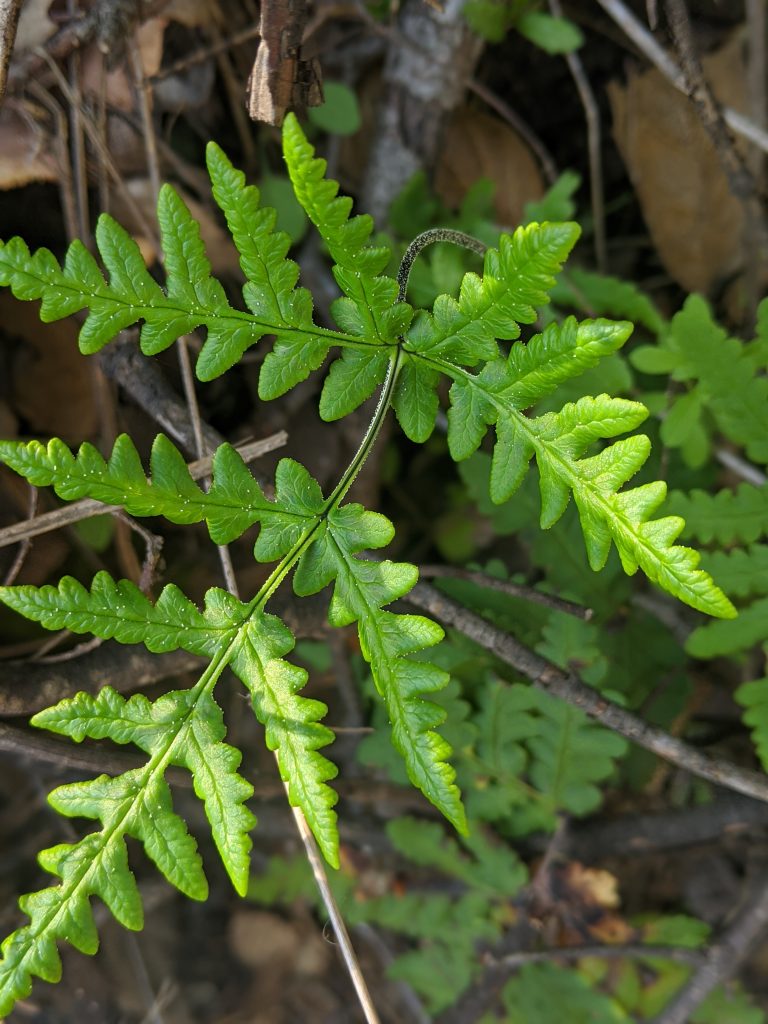Keir visits Santa Cruz Island and speaks at Rancho Santa Ana Botanic Garden
In mid-February, Keir visited Santa Cruz Island to collect ferns, mosses, liverworts, hornworts, and Selaginella. Recognized as a mixing zone for different Pentagramma species and cytotypes, or individuals of a species that express chromosomal variation, since at least 1960, the island presented Keir and his field assistant Eric with the opportunity to collect specimens of P. triangularis and P. viscosa and their hybrids — species Keir referenced in his seminar later that week.
After four days in the California Channel Islands, he found himself a hop, skip and a jump away at the Rancho Santa Ana Botanic Garden where he gave a talk on Feb. 21 about his examinations of polyploid species. Plants with more than two copies of each chromosome evolve differently than diploid plants, which often affects the ecological space in which they grow, or their niche.
Keir, in particular, is interested in instances of this genetic variation in the Western North America genus Pentagramma. By comparing diploid and polyploid species of Pentagramma, Keir is trying to understand whether polyploid species are formed from closely related species or not, and whether polyploid offspring are more or less widely spread than their diploid progenitors.
This has involved far more than the 70 specimens he collected in the Channel Islands — in fact, Keir has been studying 325 individuals of 192 unique specimens for his research. Through an analysis of bioclimatic variables having to do with temperature and precipitation, he has concluded that the distribution of cytotypes on the landscape is not random, with the caveat that his data only takes into account certain aspects of the niche, and doesn’t include things like elevation, soil, or wind patterns.
So what exactly does this niche variation look like? Keir reports that tetraploid P. triangularis have moved into wetter, colder environments, whereas diploid P. triangularis occupy a different, narrower space than their offspring.






